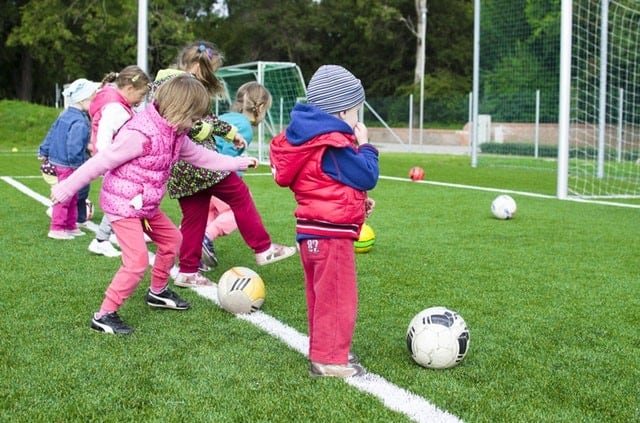
Limiting children’s recreational screen time to less than two hours a day linked to better cognition
September 26, 2018
SBRN membership survey results
January 17, 2019Today’s post comes from Dr Travis Saunders, and was cross-posted to Obesity Panacea on the PLOS blog network.
Physical literacy refers to the skills, motivation, and knowledge required to live an active lifestyle. The idea is that kids who lack any of those things are less likely to be physically active. This is an idea we’ve been talking about on Obesity Panacea for a long time.
Physical literacy as a concept makes a lot of intuitive sense – if you can’t skate, you can’t participate in a wide range of ice-based activities. If you don’t know the rules/norms around an activty, you’re not going to seek it out. And if you don’t enjoy physical activities, you’re not going to seek them out. But if you have the skills, motivation and knowledge needed for a wide range of physical activities, you’re much more likely to participate throughout your lifespan.
From 2014-2017, the RBC Canadian Assessment of Physical Literacy (CAPL) measured the physical literacy of Canadian kids in grades 4-6 at 11 sites across Canada. More than 10,000 kids participated in the study, which included a battery of physical tests to assess physical competence and daily behaviours, and questionnaires to measure motivation, knowledge and understanding. Today the results of the RBC-CAPL Learn to Play Study were published in BMC Public Health, and all 14 papers are available for free at the BMC website (for details on how to use the CAPL to measure physical literacy at your own school, camp, or sport team, visit the CAPL website here).
The results from across Canada are summarized in a paper led by Dr Mark Tremblay, and in the below figure. This is the first study of its kind in Canada, so we don’t know how these results would compare to previous generations. However, this will serve as a benchmark moving forward. And the results suggest we have a lot of room for improvement. The average aerobic fitness in CAPL participants was at the 30th percentile of global norms (e.g. 70% of kids worldwide are more fit than the average CAPL participant), and only 20% of CAPL participants are meeting physical activity guidelines.

My colleague Dany MacDonald and I oversaw Prince Edward Island data collection for the CAPL, and led two of the papers published this morning. The paper that I led focused on the relationship between different types of sedentary behaviour (things we do while sitting) and physical literacy (Dany’s paper on adequacy and predilection for physical activity is available here). Given that physical literacy is thought to be the foundation of a healthy active lifestyle, we wanted to know if it was negatively associated with screen-based (TV viewing and computer/video game use) or non-screen sedentary behaviours (reading, doing homework, talking to friends, etc).
Not surprisingly, screen-based sedentary behaviours were negatively associated with total physical literacy, physical competence, motivation and confidence, and knowledge and understanding. E.g. kids with higher levels of daily screen time had less physical competence (e.g. they were less fit, and did worse on a timed obstacle course), less motivation to be active, and less knowledge and understanding about physical activity.
The relationship between physical literacy and non-screen sedentary behaviours was a bit more complicated. Kids with higher levels of non-screen sedentary behaviour had lower levels of total physical literacy, less physical competence, and less motivation and confidence around physical activity. These relationships were in the same direction as those seen for screen-based sedentary behaviours, although much smaller.
However, non-screen sedentary behaviours were also positively associated with knowledge and understanding (although the relationship was very small). This suggests that reading, homework, and other non-screen based sedentary behaviours probably aren’t bad for knowledge and understanding of physical activities, and could even be good for them (although again, the relationship was very small).
So, what do these results mean? They suggest that non-screen sedentary behaviours have a “less bad” relationship with physical literacy, when compared to screen-based sedentary behaviours. Non-screen sedentary behaviours had a small negative association with most aspects of physical literacy, and a positive association with knowledge and understanding. In contrast, screen-based sedentary behaviours were negatively associated with ALL aspects of physical literacy.
As with all research, this study has some important caveats. The most important one being that his research was cross sectional, so we can’t say for certain that high screen time causes kids to have low physical literacy. That seems like the most plausible explanation to me, but it is possible that kids with lower levels of physical literacy actively choose more sedentary activities, given that they may be less interested or able to participate in physical activities. Of course it is also possible that screen time is just a proxy measure for something else (parental education, etc) that might be what is actually affecting physical literacy. And sedentary behaviours were self-reported, which is a problem for this field in general (it’s really hard to objectively measure screen time, especially when people have access to a range of difference devices at home and school).
If nothing else this study adds to the considerable evidence that screen-based sedentary behaviours are linked with negative outcomes in kids, while non-screen sedentary behaviours seem much less problematic (and likely beneficial for some outcomes).
Since we’re talking about the CAPL today, I’d like to take this opportunity to thank my PEI Co-PI Dr Dany MacDonald. Dany’s background is in Positive Youth Development and sport psychology, so the fact that he was willing to drive all across PEI to measure motor skills and physical fitness says a lot about his dedication to this project! We also benefited immensely from the 20+ undergraduate and graduate students who volunteered their time on this project, some of whom can be seen in the below picture. This project would not have been pleasant (or even possible) without Dany and our legion of student volunteers. Ms Rachel Kays helped coordinate the project, and to rustle up enough volunteers for each testing session. We were also fortunate to work with large number of extremely supportive teachers, school administrators, and camp directors, not to mention the participants themselves. Measuring fitness and motor skills in elementary school kids is exhausting, but it’s also a lot of fun.

PEI CAPL Study Volunteers
As I mentioned above, we were just 1 of 11 CAPL sites across Canada, and this paper is just one of 14 published this morning in BMC Public Health. Dany’s paper on adequacy and predilection can be found here, and the rest can be found here. If you would like to learn more about the CAPL, or use the CAPL protocols in your own school, camp, or sport team, you can find all the necessary details (including videos on how to use the CAPL), here.
Photo by




